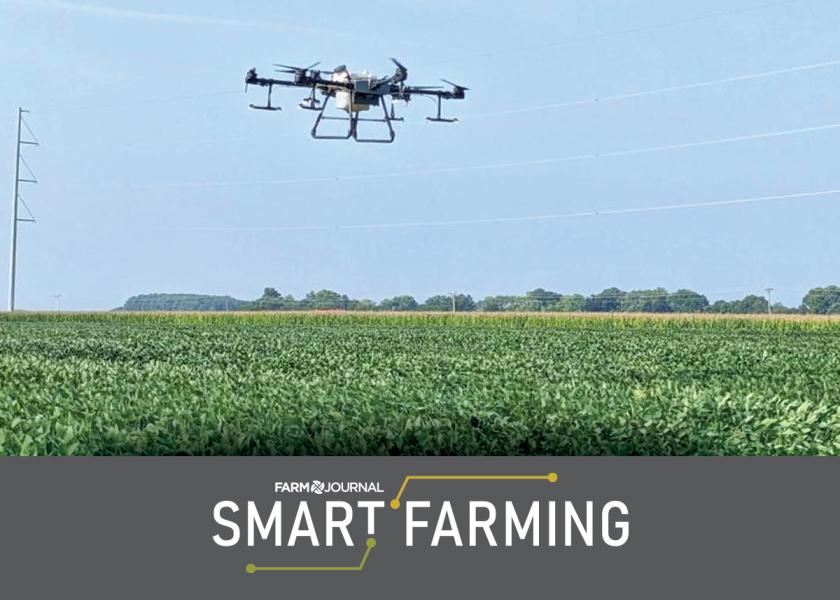How to Know if Drone Application Will Work for You

Using drones for crop protection application is an exciting new technology for growers and ag retailers alike, but it’s not a blanket solution for every field or farmer.
Here are five things to consider before heading to the field:
Topography
Topography is what can make drone application a better option than ground or plane spraying. Drones are more efficient and can provide better coverage than plane or ground spraying in hilly, oddly shaped fields.
“If your plane applicator is having to dip up and down and start and stop, the drone is going to work better,” Josh Coffing of Ceres Solutions says.
They are also a good solution for fields near waterways, organics, powerlines and tree lines.
Since Ceres began offering drone application in 2023, several growers have set aside plots in hilly and waterway areas for them to test spraying in.
If these descriptions match any of your fields, drone application may be a good fit.
Field Size
The size of the field needing sprayed is a large factor as well. Per the Federal Aviation Administration (FAA), pilots can only spray what they can see. A very large field may require the drone pilot to stop and relocate several times in order to cover the entire field.
However, if you have a large field with topography that makes traditional spraying difficult, drone application still might make sense for you.
Applicators such as Ceres typically charge by the acre but may also have a minimum charge per hour. In Coffing’s experience, using drones to spray smaller fields only totaling a few acres may not provide the return on investment the grower expects.
Consider having a conversation with one of your trusted advisors to determine what the most convenient and economical option would be for the specific acres you’re considering for drone application.
Battery Life
The battery life on the drones completing the application is limited. In fact, it can be more limiting than the tank capacity on the drone.
According to Coffing, the batteries on Ceres’ drones may last anywhere from six to nine minutes depending on the field and how often the pilot must start and stop. To help combat this limitation, the pilot will keep a few batteries on hand to switch out.
Due to a drone’s limited battery life and tank capacity, traditional spraying with a plane or ground sprayer may be faster and more economical for a large number of acres.
If you have a large field but still want to give drone spraying a try, it’s worth noting that the batteries will last a bit longer in the morning when the temperature is cooler.
The Chemical Being Applied
Keep in mind that only certain chemicals can be used for drone application. The EPA allows drones to be used for spraying if the chemical is already labeled for conventional aerial application.
This means if you already use a plane to spray your fields, the chemical being used will be fine to use with a drone as well. If you typically use ground spraying but are considering using a drone, double check the label on your chemical to ensure it can be used aerially.
Check out this label database from Crop Data Management Systems to search for the products you commonly use.
FAA Regulations
If drone application seems like a good solution for your farm, or the next best thing for your business to offer, be sure to follow the FAA guidelines for certification and approval to fly.
In addition to completing the initial pilot certification, applicators must notify the FAA before flying.
A Notice to Air Missions (NOTAM) must be filed before spraying with the drone, which typically takes 24-72 hours to receive back. If an area within a controlled air space–such as near a local airport–needs sprayed, the pilot must file a Certificate of Approval (COA). This can take a week or more to receive back, but it lasts for a year. Without the COA, the drone won’t turn on in the area.







